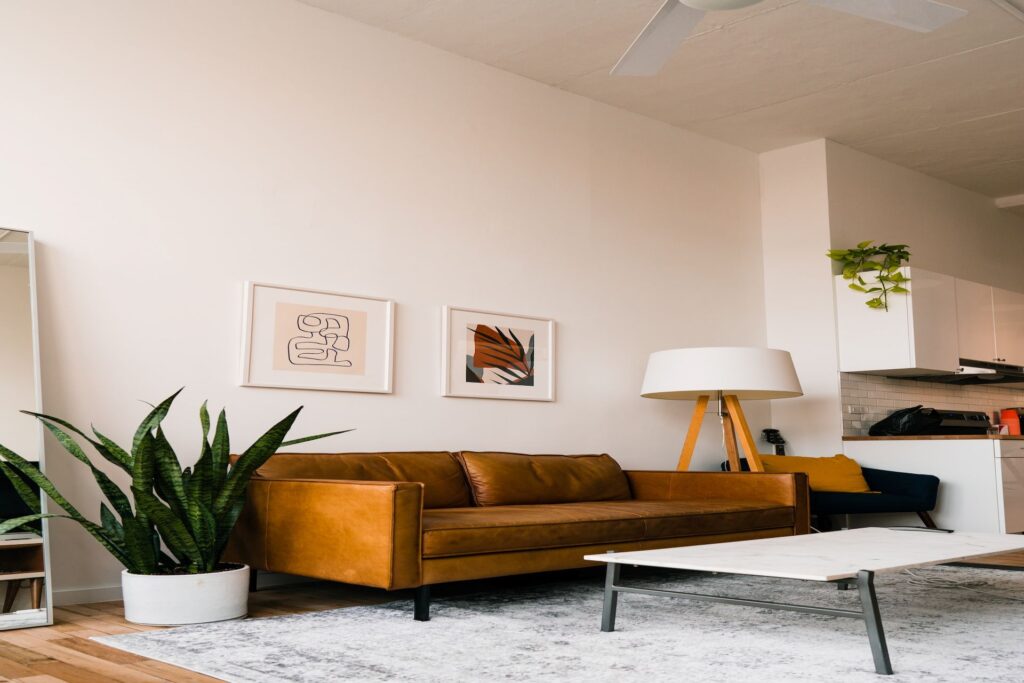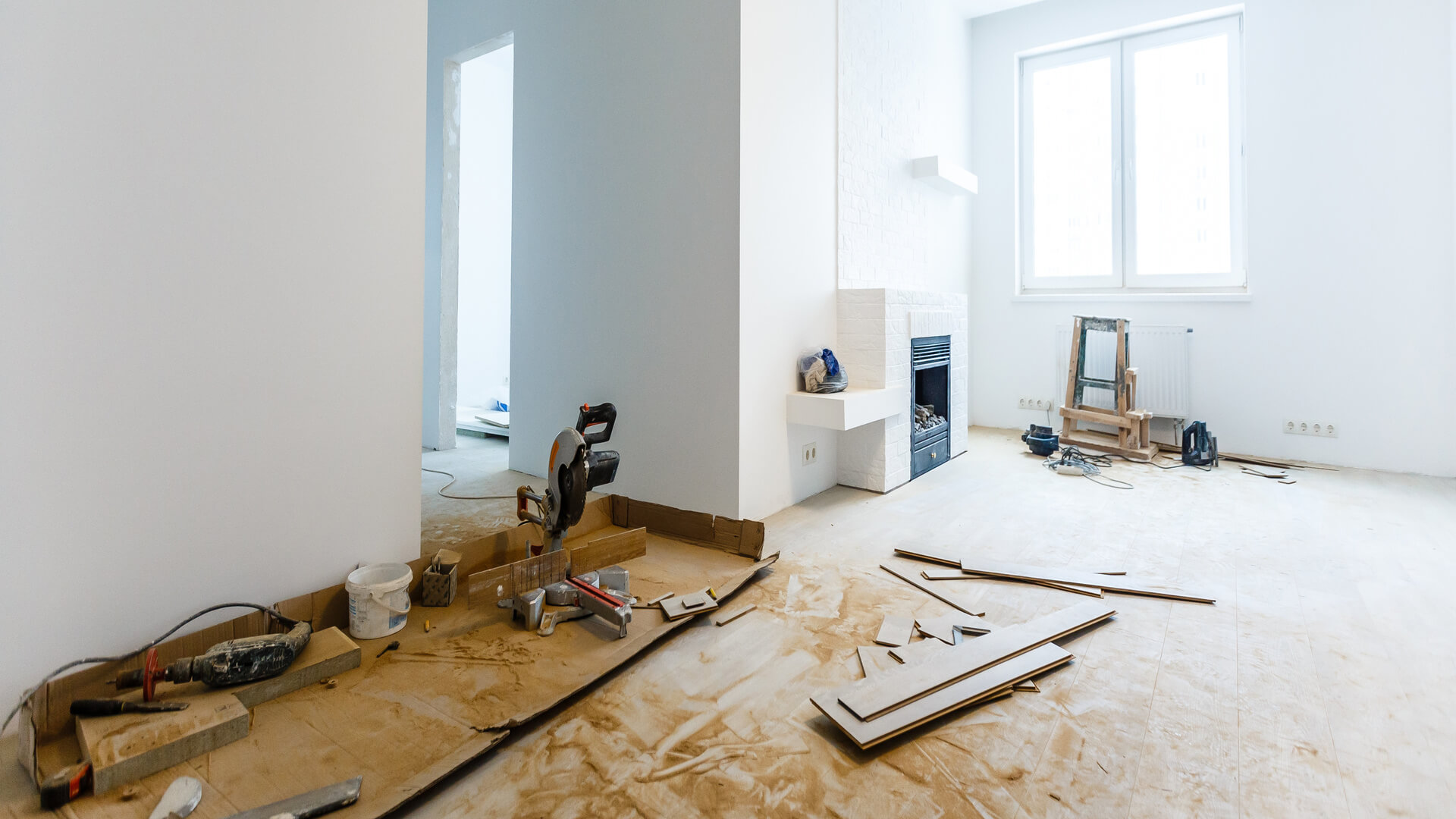Once you have your goals and budget in place, it’s time to develop a design plan. Consider the layout, color scheme, and style you want to achieve. You can seek inspiration from interior design magazines, and websites, or even consult with a professional designer for guidance.

Step 4: Demolition
Before you can build, you must deconstruct. Begin by removing any existing furniture, fixtures, and flooring. Be prepared for some dust and debris during this phase. Ensure you have the necessary safety equipment and tools for the job.
Step 5: Structural Changes
If your remodel involves structural alterations, this is the time to address them. This might include knocking down walls to create an open-concept space, adding or relocating windows for more natural light, or reinforcing the framework for heavy fixtures.
Step 6: Electrical and Plumbing Work
If your remodeling plan includes relocating electrical outlets, adding lighting fixtures, or making changes to plumbing, it’s crucial to hire licensed professionals for these tasks. Safety and compliance with building codes are paramount.

Step 7: Drywall and Insulation
Install new drywall or repair existing walls as needed. Ensure proper insulation for energy efficiency and soundproofing, especially if your living room shares walls with bedrooms or other sensitive areas.
Step 8: Flooring
Choose your flooring material based on your design plan and budget. Options range from hardwood and laminate to tile and carpet. Ensure proper installation and consider eco-friendly, low-maintenance choices.
Step 9: Painting and Finishing
Painting is where your living room’s personality truly emerges. Apply your chosen colors carefully, and pay attention to details like trim and accents. For added flair, consider textured finishes or wall treatments.
Step 10: Cabinetry and Built-Ins
If your remodel includes new cabinets, shelves, or built-in units, install them at this stage. Custom cabinetry can optimize space and provide storage solutions tailored to your needs.
Step 11: Furnishings and Decor
Now comes the fun part – furnishing and decorating your revamped living room. Select furniture pieces that align with your design plan and complement the overall style. Add decorative elements such as artwork, rugs, and cushions to infuse character into the space.
Step 12: Lighting
Lighting plays a significant role in setting the mood of your living room. Consider a mix of ambient, task, and accent lighting. Install fixtures that are not only functional but also contribute to the room’s aesthetic.
Step 13: Final Touches
Take a final walkthrough and address any remaining details. Ensure that all elements of your design plan have been executed to your satisfaction. Make any necessary adjustments and corrections.
Step 14: Quality Assurance
Before declaring your living room remodel complete, conduct a thorough quality check. Ensure that all systems, fixtures, and finishes are functioning correctly and meet your expectations.
Step 15: Enjoy Your New Living Space
Once you’re satisfied with the results and everything is in order, it’s time to enjoy your newly remodeled living room. Invite friends and family over to share in the transformation and relish in the comfort and beauty of your revamped space.
Conclusion: Steps To Remodeling Your Living Room
Remodeling your living room can be a rewarding journey when you follow the right living room remodeling steps and the living room renovation process. From defining your goals and setting a budget to the final touches and quality assurance, each step contributes to the creation of a more stylish, functional, and inviting living space. So, roll up your sleeves, unleash your creativity, and embark on the path to a rejuvenated living room that reflects your personal style and enhances your daily life.
Steps to remodeling your living room can breathe new life into your home, creating a more inviting and functional space. Whether you’re embarking on a major overhaul or a subtle transformation, knowing the living room remodeling steps and the living room renovation process can make the journey smoother. In this comprehensive guide, we will walk you through how to remodel your living room process, offering valuable tips for upgrading your living room along the way.

Step 1: Define Your Goals
Before diving into any project, it’s essential to clarify your objectives. What do you want to achieve with your living room remodel? Is it about creating a more open space, enhancing natural light, or simply updating the decor? Having a clear vision will guide your decisions throughout the process.
Step 2: Set a Budget
Understanding your financial boundaries is crucial. Determine how much you’re willing to invest in your living room remodel. This budget will help you prioritize expenses and make informed choices regarding materials, furnishings, and labor.
Step 3: Create a Design Plan
Once you have your goals and budget in place, it’s time to develop a design plan. Consider the layout, color scheme, and style you want to achieve. You can seek inspiration from interior design magazines, and websites, or even consult with a professional designer for guidance.

Step 4: Demolition
Before you can build, you must deconstruct. Begin by removing any existing furniture, fixtures, and flooring. Be prepared for some dust and debris during this phase. Ensure you have the necessary safety equipment and tools for the job.
Step 5: Structural Changes
If your remodel involves structural alterations, this is the time to address them. This might include knocking down walls to create an open-concept space, adding or relocating windows for more natural light, or reinforcing the framework for heavy fixtures.
Step 6: Electrical and Plumbing Work
If your remodeling plan includes relocating electrical outlets, adding lighting fixtures, or making changes to plumbing, it’s crucial to hire licensed professionals for these tasks. Safety and compliance with building codes are paramount.

Step 7: Drywall and Insulation
Install new drywall or repair existing walls as needed. Ensure proper insulation for energy efficiency and soundproofing, especially if your living room shares walls with bedrooms or other sensitive areas.
Step 8: Flooring
Choose your flooring material based on your design plan and budget. Options range from hardwood and laminate to tile and carpet. Ensure proper installation and consider eco-friendly, low-maintenance choices.
Step 9: Painting and Finishing
Painting is where your living room’s personality truly emerges. Apply your chosen colors carefully, and pay attention to details like trim and accents. For added flair, consider textured finishes or wall treatments.
Step 10: Cabinetry and Built-Ins
If your remodel includes new cabinets, shelves, or built-in units, install them at this stage. Custom cabinetry can optimize space and provide storage solutions tailored to your needs.
Step 11: Furnishings and Decor
Now comes the fun part – furnishing and decorating your revamped living room. Select furniture pieces that align with your design plan and complement the overall style. Add decorative elements such as artwork, rugs, and cushions to infuse character into the space.
Step 12: Lighting
Lighting plays a significant role in setting the mood of your living room. Consider a mix of ambient, task, and accent lighting. Install fixtures that are not only functional but also contribute to the room’s aesthetic.
Step 13: Final Touches
Take a final walkthrough and address any remaining details. Ensure that all elements of your design plan have been executed to your satisfaction. Make any necessary adjustments and corrections.
Step 14: Quality Assurance
Before declaring your living room remodel complete, conduct a thorough quality check. Ensure that all systems, fixtures, and finishes are functioning correctly and meet your expectations.
Step 15: Enjoy Your New Living Space
Once you’re satisfied with the results and everything is in order, it’s time to enjoy your newly remodeled living room. Invite friends and family over to share in the transformation and relish in the comfort and beauty of your revamped space.
Conclusion: Steps To Remodeling Your Living Room
Remodeling your living room can be a rewarding journey when you follow the right living room remodeling steps and the living room renovation process. From defining your goals and setting a budget to the final touches and quality assurance, each step contributes to the creation of a more stylish, functional, and inviting living space. So, roll up your sleeves, unleash your creativity, and embark on the path to a rejuvenated living room that reflects your personal style and enhances your daily life.
Steps to remodeling your living room can breathe new life into your home, creating a more inviting and functional space. Whether you’re embarking on a major overhaul or a subtle transformation, knowing the living room remodeling steps and the living room renovation process can make the journey smoother. In this comprehensive guide, we will walk you through how to remodel your living room process, offering valuable tips for upgrading your living room along the way.

Step 1: Define Your Goals
Before diving into any project, it’s essential to clarify your objectives. What do you want to achieve with your living room remodel? Is it about creating a more open space, enhancing natural light, or simply updating the decor? Having a clear vision will guide your decisions throughout the process.
Step 2: Set a Budget
Understanding your financial boundaries is crucial. Determine how much you’re willing to invest in your living room remodel. This budget will help you prioritize expenses and make informed choices regarding materials, furnishings, and labor.
Step 3: Create a Design Plan
Once you have your goals and budget in place, it’s time to develop a design plan. Consider the layout, color scheme, and style you want to achieve. You can seek inspiration from interior design magazines, and websites, or even consult with a professional designer for guidance.

Step 4: Demolition
Before you can build, you must deconstruct. Begin by removing any existing furniture, fixtures, and flooring. Be prepared for some dust and debris during this phase. Ensure you have the necessary safety equipment and tools for the job.
Step 5: Structural Changes
If your remodel involves structural alterations, this is the time to address them. This might include knocking down walls to create an open-concept space, adding or relocating windows for more natural light, or reinforcing the framework for heavy fixtures.
Step 6: Electrical and Plumbing Work
If your remodeling plan includes relocating electrical outlets, adding lighting fixtures, or making changes to plumbing, it’s crucial to hire licensed professionals for these tasks. Safety and compliance with building codes are paramount.

Step 7: Drywall and Insulation
Install new drywall or repair existing walls as needed. Ensure proper insulation for energy efficiency and soundproofing, especially if your living room shares walls with bedrooms or other sensitive areas.
Step 8: Flooring
Choose your flooring material based on your design plan and budget. Options range from hardwood and laminate to tile and carpet. Ensure proper installation and consider eco-friendly, low-maintenance choices.
Step 9: Painting and Finishing
Painting is where your living room’s personality truly emerges. Apply your chosen colors carefully, and pay attention to details like trim and accents. For added flair, consider textured finishes or wall treatments.
Step 10: Cabinetry and Built-Ins
If your remodel includes new cabinets, shelves, or built-in units, install them at this stage. Custom cabinetry can optimize space and provide storage solutions tailored to your needs.
Step 11: Furnishings and Decor
Now comes the fun part – furnishing and decorating your revamped living room. Select furniture pieces that align with your design plan and complement the overall style. Add decorative elements such as artwork, rugs, and cushions to infuse character into the space.
Step 12: Lighting
Lighting plays a significant role in setting the mood of your living room. Consider a mix of ambient, task, and accent lighting. Install fixtures that are not only functional but also contribute to the room’s aesthetic.
Step 13: Final Touches
Take a final walkthrough and address any remaining details. Ensure that all elements of your design plan have been executed to your satisfaction. Make any necessary adjustments and corrections.
Step 14: Quality Assurance
Before declaring your living room remodel complete, conduct a thorough quality check. Ensure that all systems, fixtures, and finishes are functioning correctly and meet your expectations.
Step 15: Enjoy Your New Living Space
Once you’re satisfied with the results and everything is in order, it’s time to enjoy your newly remodeled living room. Invite friends and family over to share in the transformation and relish in the comfort and beauty of your revamped space.
Conclusion: Steps To Remodeling Your Living Room
Remodeling your living room can be a rewarding journey when you follow the right living room remodeling steps and the living room renovation process. From defining your goals and setting a budget to the final touches and quality assurance, each step contributes to the creation of a more stylish, functional, and inviting living space. So, roll up your sleeves, unleash your creativity, and embark on the path to a rejuvenated living room that reflects your personal style and enhances your daily life.

